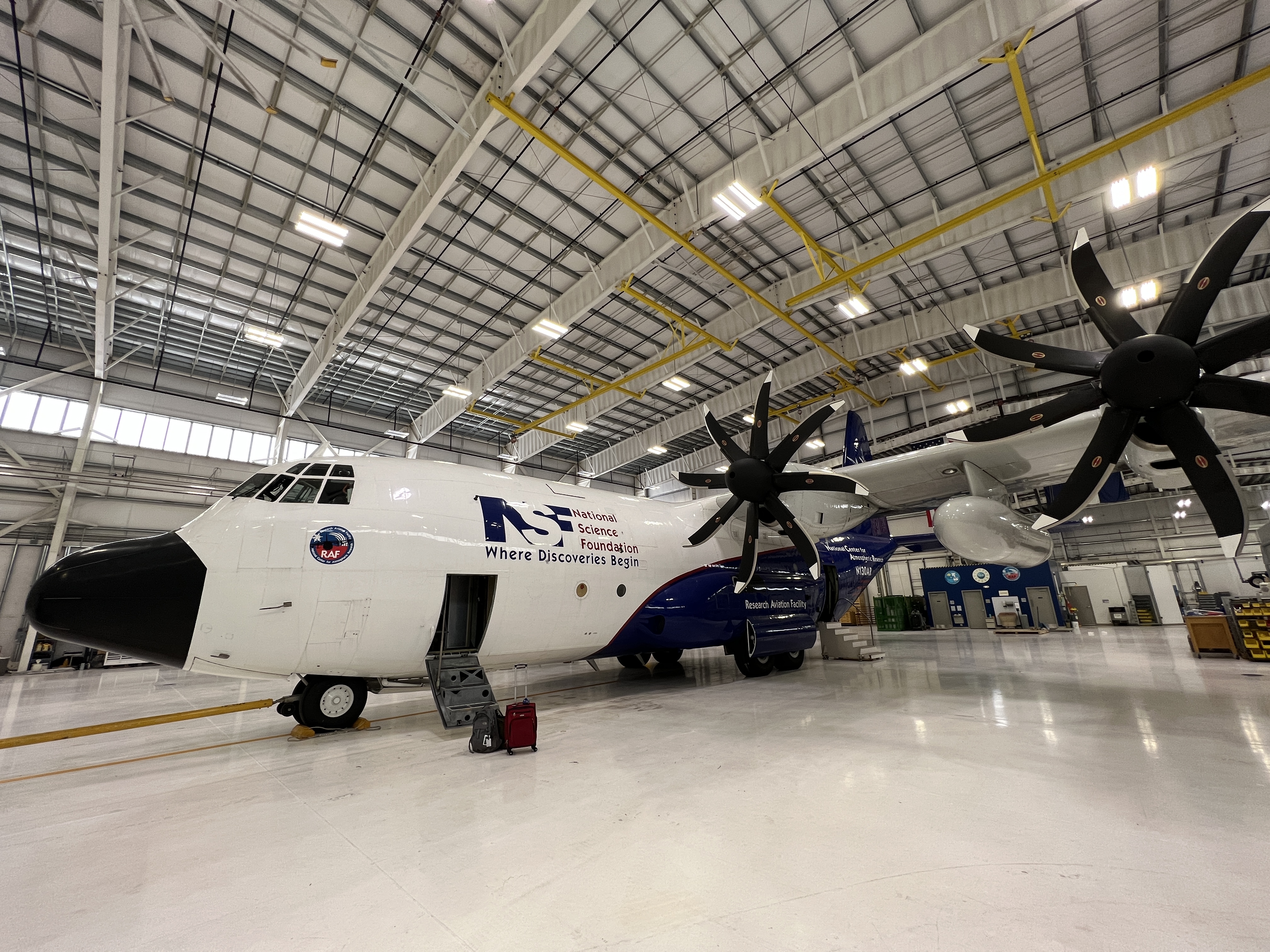
Jun 1, 2023 - by Laura Snider
A next-generation airborne radar designed by the National Center for Atmospheric Research (NCAR) that could revolutionize our ability to observe, understand, and ultimately predict high-impact weather events has received $91.8 million in funding from the National Science Foundation (NSF).
The Airborne Phased Array Radar (APAR) will improve on existing radar by allowing scientists to sample the atmosphere at higher spatial resolution and probe more deeply into storms, ultimately painting a more detailed picture of storm dynamics and microphysics. APAR will also be an extremely flexible platform. Its agile scanning capability can switch radar beam directions almost instantaneously, allowing scientists to scan the atmosphere in any direction, a contrast to traditional fixed-direction airborne scanning radars.
The rich data generated from APAR will give forecasters critical information for better predicting a range of high-impact weather events, including hurricanes, atmospheric rivers, tornadoes, derechoes, and blizzards.
“As society struggles with an increase in devastating extreme weather events, it’s imperative that the Earth system science community has the tools it needs to provide the actionable information communities need to become more resilient,” said NCAR Director Everette Joseph. “APAR is one such tool. We’ve been working on this important technology for more than a decade, and I’m thrilled that we will be able to put it to use serving society.
NCAR is sponsored by the National Science Foundation. Other project partners include NOAA, Ball Aerospace, Colorado State University, State University of New York (SUNY) Stony Brook, University of Massachusetts Amherst, and the University of Oklahoma.
“The APAR project is a prime example of how NSF is bringing science, engineering, and technology to bear on the most important and pressing challenges our nation faces,” NSF Director Sethuraman Panchanathan said. “By strategically investing in groundbreaking infrastructure like the Airborne Phased Array Radar, NSF is helping to revolutionize the future of U.S. weather forecasting, which is critical to our national and economic security.”
APAR will be deployed on the NSF/NCAR C-130 aircraft, filling a gap in the airborne radar capabilities available to the university research community that has existed since the Electra Doppler Radar (ELDORA) was retired in 2013. APAR will replace and extend ELDORA’s capabilities, collecting critical, three-dimensional data in areas where ground radars are limited, such as over the ocean and in mountainous terrain. NCAR expects to have the radar up and running in 2028.
The lessons learned from the development of APAR for the research community will directly drive the development of a similar instrument for weather-monitoring operations at NOAA, which has identified APAR as its preferred radar technology for its next generation of hurricane hunter aircraft. The agency plans to replace its current WP-3D hurricane hunter aircraft, which use a more limited tail Doppler radar, with C-130s in 2030 and has included the cost of adding APAR to these aircraft in its budget request to Congress.
“For years, the NOAA hurricane hunters have collected vital data to preserve life and property and advance understanding of our atmosphere, with tail Doppler radar data from the WP-3D Orion playing an important role,” said Rick Spinrad, NOAA administrator. “The funding from NSF and the work of NCAR and other partners on this Airborne Phased Array Radar will enable a transformative leap in our radar and data-collecting capabilities and lead to improved forecast guidance. I eagerly await the discoveries we will make with this capability aboard the new C-130J hurricane hunter aircraft we plan to acquire.”
The collaboration among NCAR, NSF, and NOAA on this project is a model for partnerships across the research and operational weather communities. Beyond collaborating on technology development, having the same type of instrument in use by both communities means that the latest advances in understanding and predicting storms made by researchers will be rapidly available for weather forecasters tasked with keeping the public safe.
“APAR is a national imperative for the entire atmospheric science community as we continue our work to better understand and predict incredibly damaging weather events,” said Antonio Busalacchi, president of the University Corporation for Atmospheric Research, which manages NCAR on behalf of NSF. “It is also an outstanding example of research to operations for observational capabilities that I believe will pave the way for further productive collaborations across the weather enterprise.”
APAR’s technology will be a game-changer for atmospheric scientists. Instead of relying on a single transmitter and antenna, APAR will incorporate thousands of miniature transmitters and receivers on four rectangular plates. These removable C-band arrays will be mounted on the top, both sides, and the rear door of the C-130. As the aircraft travels, the radar will gather data with greatly improved spatial and temporal resolution and with significantly reduced signal loss in heavy precipitation compared to today’s X-band airborne radar.
APAR’s 5-centimeter wavelength will also allow measurements of storm dynamics and microphysics deeper inside the storms, and the system’s dual polarization capability will be able to distinguish between raindrops, ice crystals, and snowflakes. The result will be improved understanding of storm structures, and ultimately, better prediction of heavy precipitation and its potential impacts. The mounting of the system on a C-130, which can stay airborne for long durations, will allow the radar to sample some of Earth's most remote locations.
Together these capabilities will give scientists significant new insights into the persistent mysteries of clouds, the weather systems they create, and our climate system.
“Clouds are incredibly important components of the energy cycle in the Earth’s climate systems,” said NCAR researcher and APAR Chief Scientist Wen-Chau Lee, who first conceived of the idea for APAR about two decades ago. “If we do not understand individual clouds — or individual thunderstorms — we won’t understand the collective impact of these clouds on the Earth’s climate. APAR is a tool that will help us deepen our understanding.”